What Makes a Handicap Accessible Van ADA Compliant?
A Look at the ADA Guidelines for Handicap Accessible Vehicles
The Americans with Disabilities Act, or ADA as it is often referred, was a set of handicap accessible laws signed in 1990 and had a profound impact on the mobility industry. BraunAbility, at that time known as The Braun Corporation, was well-positioned to meet the rapidly growing demand for handicap accessible van options in the marketplace. The ADA set new industry standards for commercial mobility systems, many of which were already met or exceeded by our commercial lift designs. The ADA helped validate our then 20-year commitment to testing and manufacturing the safest, most reliable ADA compliant vehicles and lift systems available.
The ADA was a historic piece of civil rights legislation signed by President H.W. Bush that was designed to protect people with disabilities against discrimination. This included areas like hiring practices, access to eduction, public transportation, and all public and private building access open to the general population. The ADA was instrumental in guaranteeing equal opportunity for individuals with disabilities right down to ADA compliant vehicles.
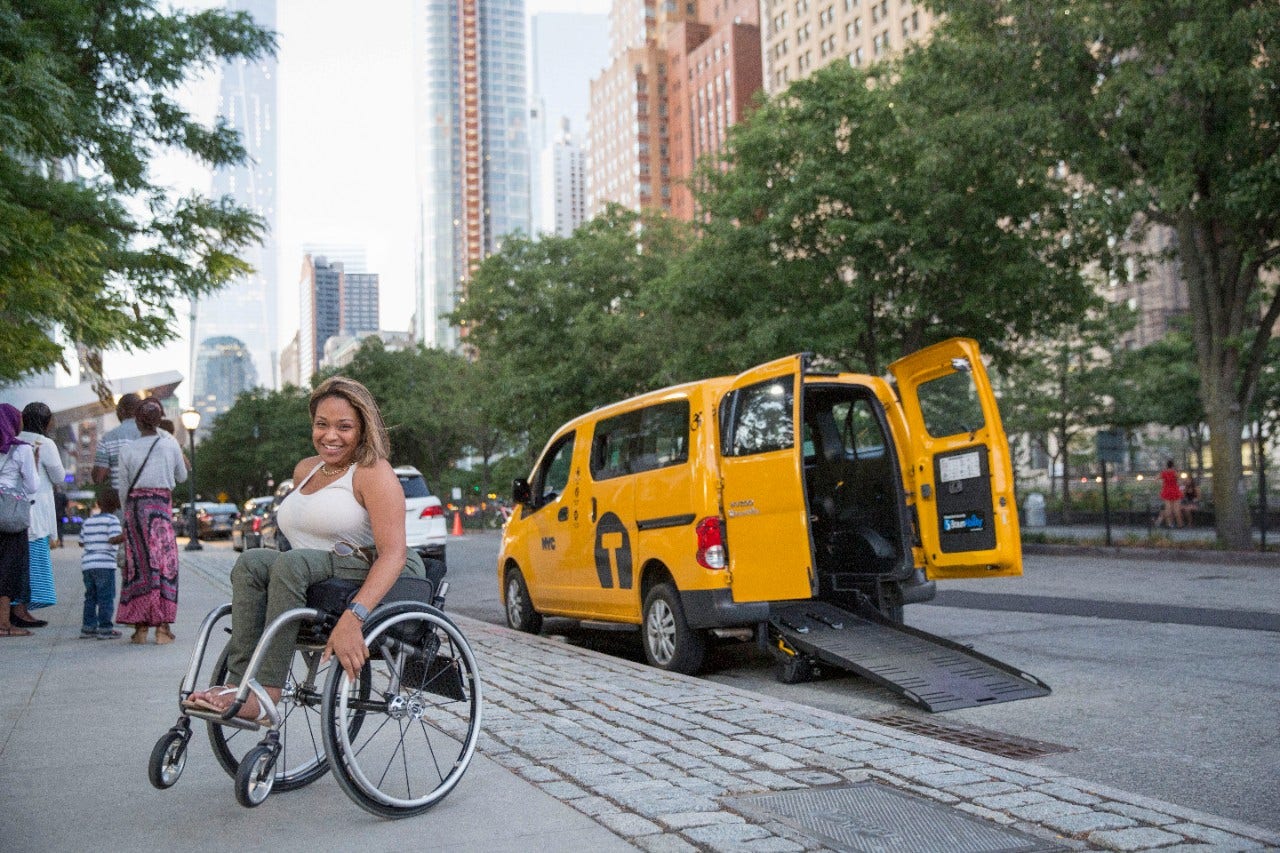
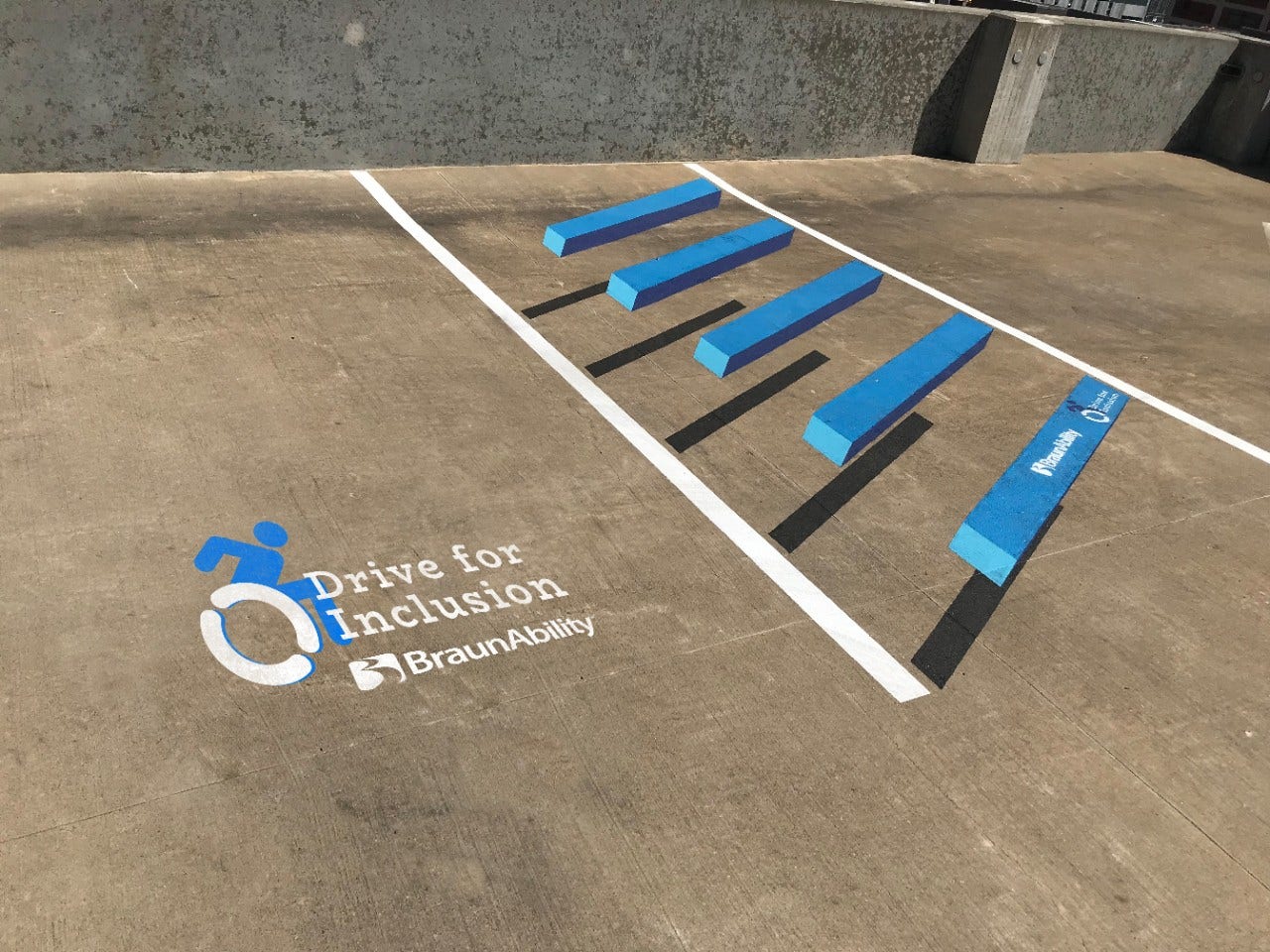
What Does the 2010 ADA Standards for Accessible Design Say About Accessible Vehicles?
Nothing! Some companies incorrectly report that the amendment to the ADA in 2010 discusses specific design requirements for handicap access vans when in reality, most requirements around vehicles actually discuss ADA handicap accessible parking requirements and access aisle requirements.
For example, traditional spaces are required to be at least 96 inches wide and van parking spaces are required to be 132 inches (not including the adjacent access aisle which is required to be at least 60 inches wide).
Additionally, the “method and color of marking are not specified by these requirements.” Based on these regulations, the ADA had no issues with the new BraunAbility 3D Access Aisle design (seen at left) which creates a 3D barrier illusion in the access aisle to prevent people from parking on the area. That extra space is essential for people who need to deploy a ramp or who need the access aisle space for transfers into and out of their wheelchair.
What are the ADA Accessible Guidelines (ADAAG) for Transportation Vehicles?
The ADAAG for Transportation Vehicles is implemented and upheld by the Department of Transportation (DOT) and relates only to commercial vehicles. It outlines several guidelines for transportation options like buses, trains, airplanes, and taxis and also includes handicap accessible van designs.
BraunAbility manufactures several commercial products including an array of ramp styles as well as some commercial ADA accessible vehicles.
The ADAAG for Transportation Vehicles often mentions vehicles operating on a "demand responsive system," which would refer to a system of transporting individuals which is not a fixed route system, like a public bus. This would directly speak to the BraunAbility NV200 taxi and the Simple Stow infloor vehicle.
These types of vehicles must have the following:
Lifts and Ramps:
Vehicles need a boarding device (e.g. lift or ramp) so that a passenger who uses a wheelchair or mobility device can reach a securement location onboard. Lifts must have a minimum design load of 600 pounds and lift platforms must accommodate a wheelchair measuring 30 inches by 48 inches. BraunAbility lifts are certified for 1000-lbs and platforms meet or exceed space requirements for even the largest power wheelchairs and scooters.
Illumination, Contrast, and Slip-Resistant Surfaces:
Stepwells and doorways of vehicles must be illuminated in ADA handicap accessible van designs. Doors and steps need slip-resistant surfaces. BraunAbility lifts and ramps are powder-coated steel which not only provides a rust-free cover to the steel beneath but also provides texture for superior grip for the wheels of a wheelchair.
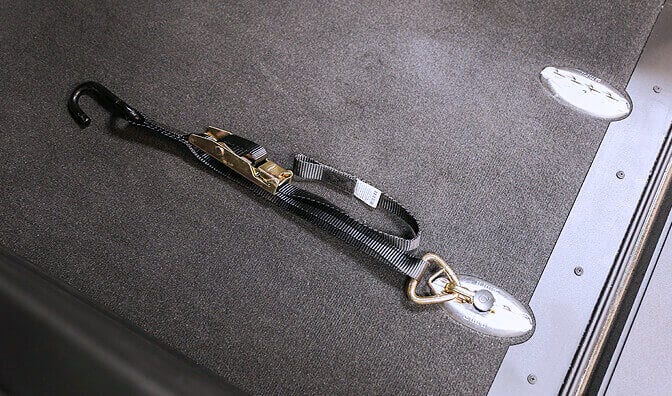
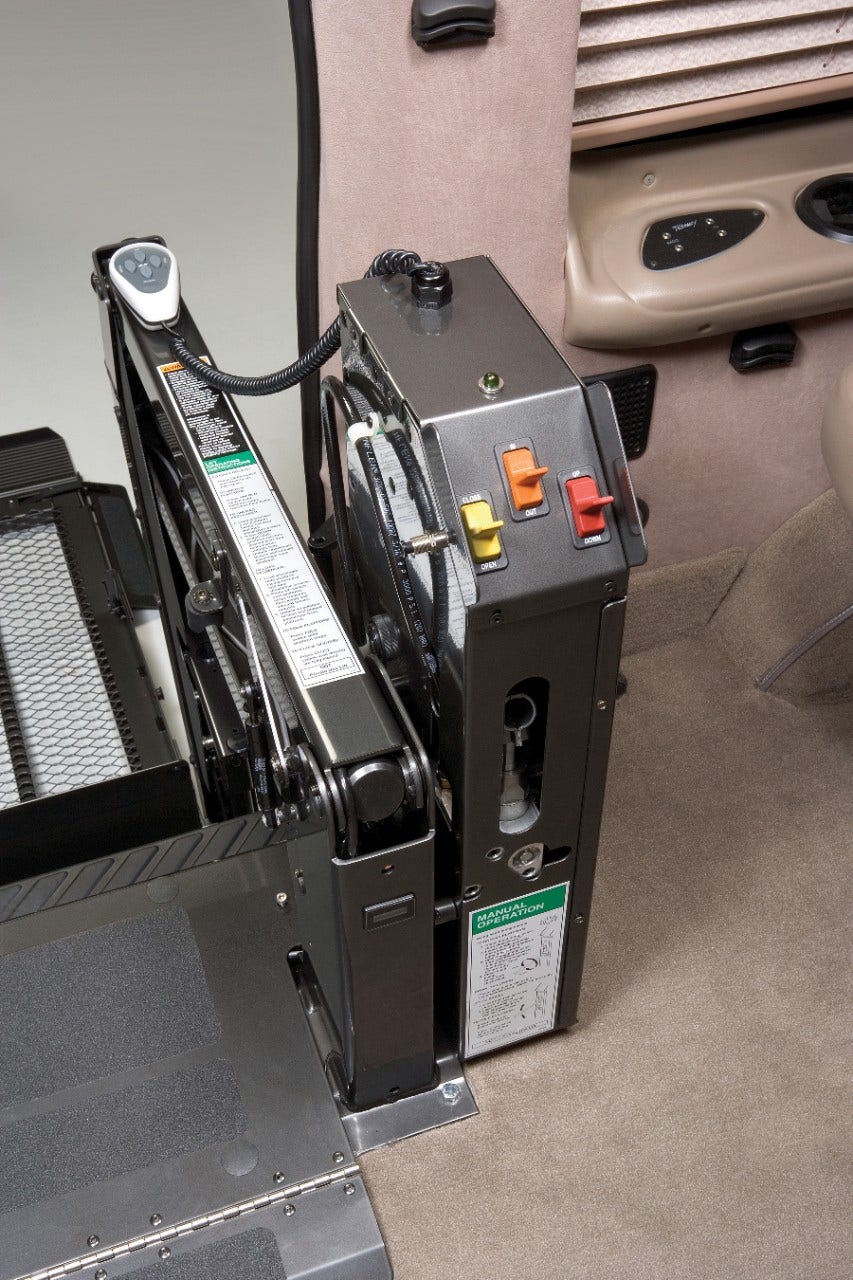
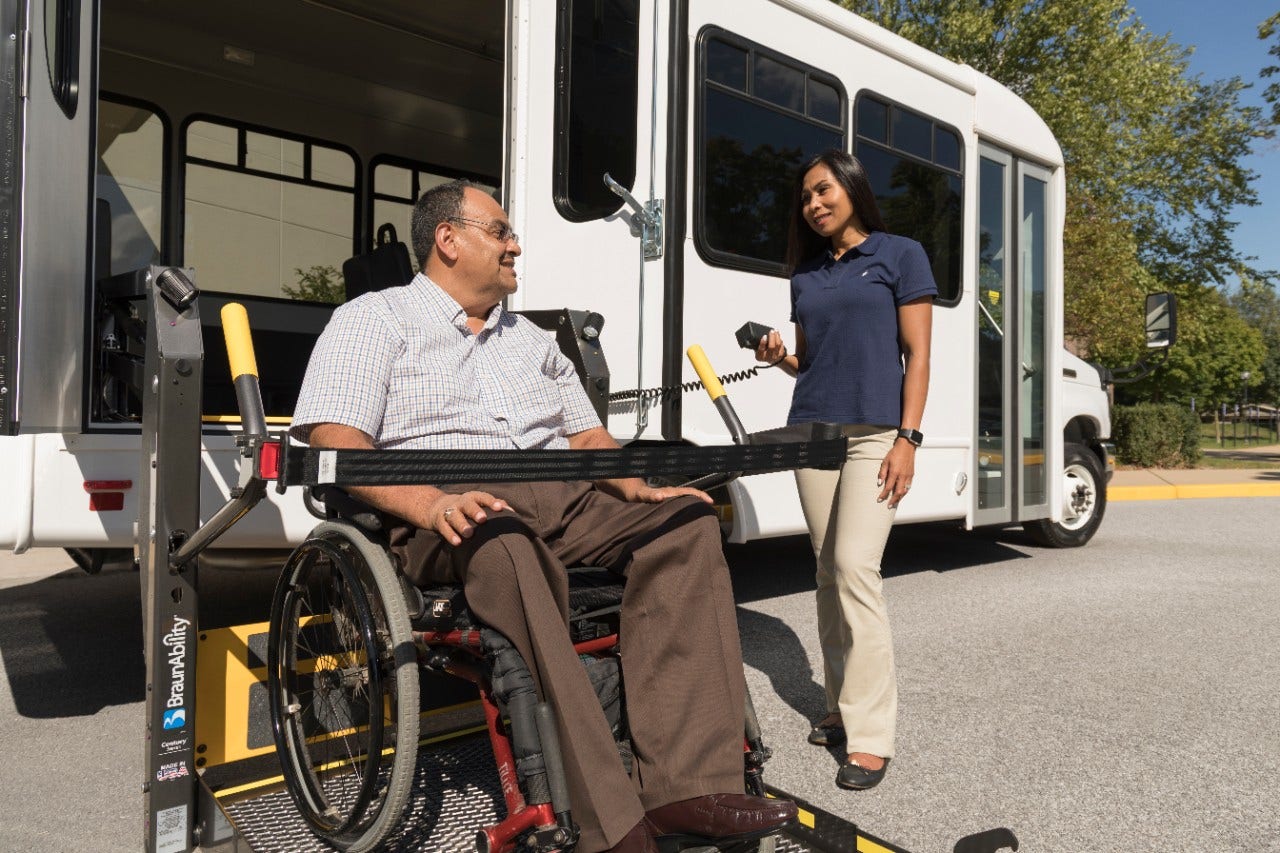
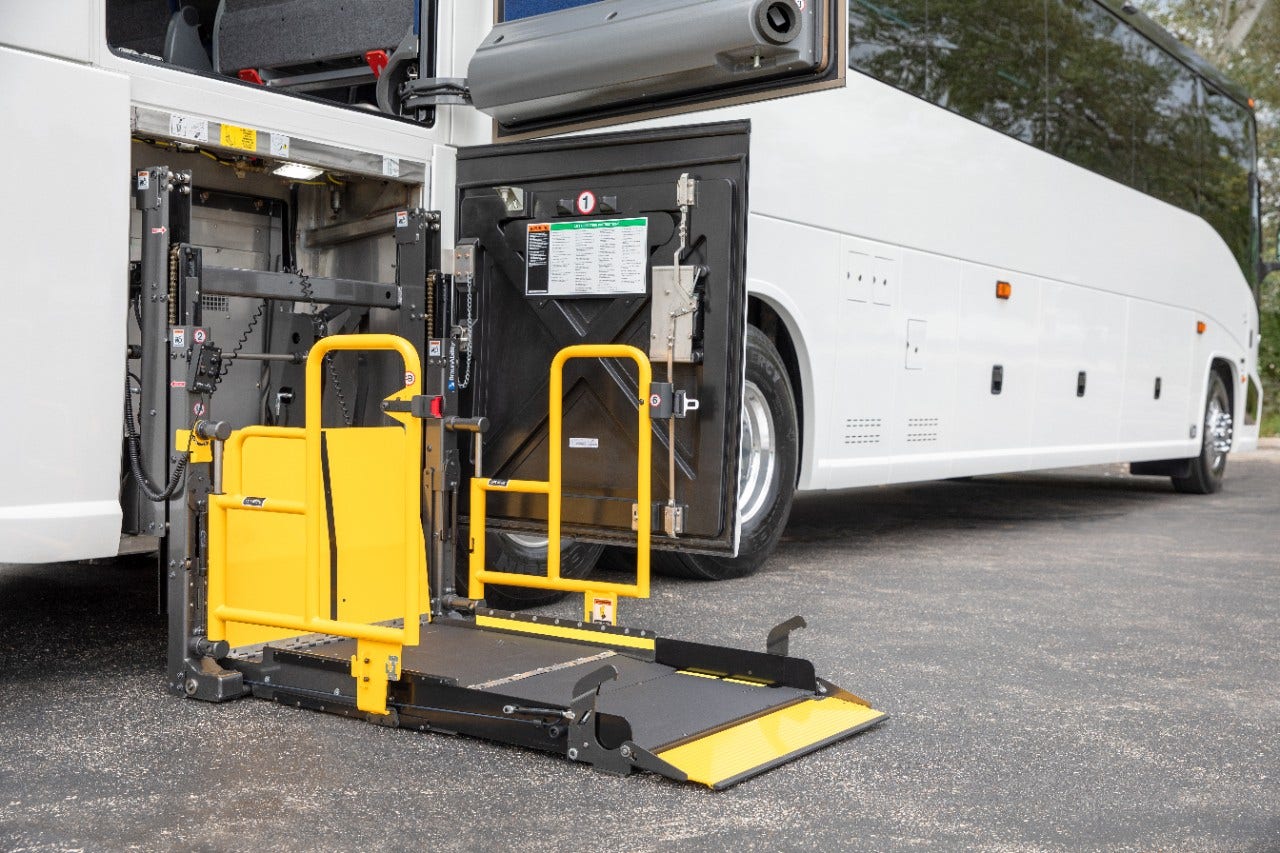

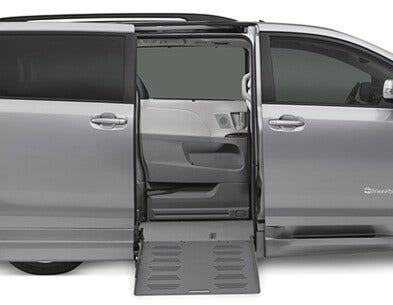
What are the Accessibility Requirements for a Commercial Handicap Access Van?
In section 38 of the ADA Accessibility Specifications for Transportation Vehicles, a general level of accessibility is outlined.
A walk-through of a BraunAbility handicap accessible van equipped with a ramp or lift will show that they are the top-of-the-line when it comes to quality craftsmanship, safety, and performance.
- For each wheelchair or mobility aid securement device provided, a seatbelt and shoulder harness should also be provided and should not take the place of a securement device for the wheelchair or mobility aid.
- Lifts should incorporate an emergency method of lowering and stowing in the event of a failure. Lift platforms should be equipped with barriers to prevent wheels of a mobility aid from rolling off during operation on an ADA compliant van.
- The lift platform should not move at a rate exceeding 6 inches/second when lowering and lifting an occupant and not exceed 12 inches/second during deploying and stowing.
- Vehicle lifts and ramps longer than 30” should have a minimum weight capacity of 600 lbs. Ramps slope shall not exceed 1:4 when deployed to ground level on an ADA vehicle.
- For vehicles of 22' in length or less, the overhead clearance between the top of the door opening and the raised lift platform, or highest point of a ramp, shall be a minimum of 56".
- Other stepwells and doorways, including doorways in which lifts or ramps are installed, shall have, at all times, at least 2 foot-candles (21.52 lumens) of illumination measured on the step tread, or lift or ramp, when deployed at the vehicle floor level.
- All ramps and lifts will provide sufficient clearances to permit a wheelchair or other mobility aid user to reach a securement location on ADA compliant vehicles.
Related Articles
- Join BraunAbility and Mobility Dealers Across the Country in Honoring the 29th Anniversary of the ADA
- The Top 10 Wheelchair Accessible Cities of the US
- The ADA and the Spirit of Self-Advocacy
